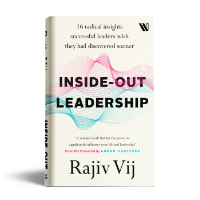The last couple of months have been a real trying time for my family and me. However, they have also been a source of receiving a wonderful lesson in life. During these weeks, I lost my mum-in-law, who I dearly loved. As she received treatment in Singapore, she spent the last five weeks of her life with us. The initial shock of her sudden diagnosis of a lethal cancer, and later, losing her within weeks of diagnosis, despite our best efforts to get her treated, have left my wife, her family and me distraught. Strangely enough, despite the emotional turmoil, there’s been a certain amount of peace and strength within all of us. As we reconcile to this irreparable loss, we have been reflecting on the entire crisis and searching for the lessons it offered us. While there are many lessons to be learnt from this experience, I would like to share what I felt was the most important one for me.
As her serious illness engulfed our lives, numerous questions flooded our minds. Besides wondering about why after leading such a loving and meaningful life, she has to experience this early and difficult end, what disturbed us most was the coming face to face with the meaning of life and questions around what remains of a person and their life’s actions in the end. The consistent answer we received was what sustains life, and what sustains after life, is purely love. Despite the challenges of the situation, somehow we were all quite calm, positive and strong all through. Besides our meditation practice, I believe it was really the strength of our love that gave us this special strength during this troubled time. The tender moments all of us had the privilege to spend with her in her last days were truly special. It was the depth of our love that held the family together and made those short five weeks so precious. It is also the anchor of love and compassion that is now slowly beginning to provide the…














